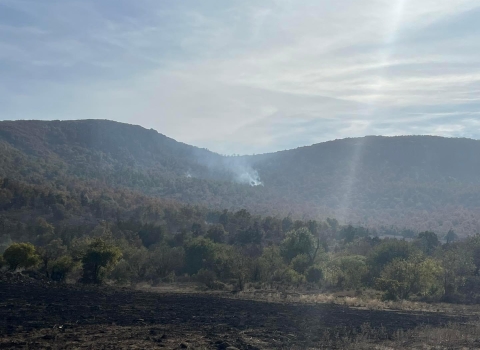WALL, S.D. — Today, on Endangered Species Day, the Department of the Interior announced a $62.5 million investment from the Inflation Reduction Act to help plan for endangered species recovery efforts that will be implemented over the next several years to benefit more than 300 species currently listed under the Endangered Species Act (ESA).
The President’s Investing in America agenda is enabling the Department of the Interior to play a leading role in the transition to a clean energy economy, advancing key habitat restoration, land resilience and water projects, and environmental justice.
“Communities across the country are dealing with a crisis of extinction with climate change climate change
Climate change includes both global warming driven by human-induced emissions of greenhouse gases and the resulting large-scale shifts in weather patterns. Though there have been previous periods of climatic change, since the mid-20th century humans have had an unprecedented impact on Earth's climate system and caused change on a global scale.
Learn more about climate change and habitat loss pushing more species to the brink,” said Secretary of the Interior Deb Haaland. “Through President Biden’s Investing in America agenda we now have new resources to advance proactive, collaborative and innovative measures in an effort to save America's wildlife and plant species. The funding announced today will support the scientific excellence behind the U.S. Fish and Wildlife Service’s stewardship efforts and bolster resources so the Service can continue to support recovery planning for hundreds of endangered and threatened species.”
“This infusion of Inflation Reduction Act funding will allow us to hire additional biologists so we can ensure recovery plans are in place to provide the roadmaps for on-the-ground implementation actions that are necessary to recover species and remove them from the Endangered Species list,” said Service Director Martha Williams. “America’s fish, wildlife and plant resources belong to all of us, and ensuring the recovery of threatened and endangered species is a shared responsibility.”
Biologists will initially focus efforts on recovery planning for 32 threatened and endangered species that have completed Species Status Assessments, which serve as the biological background for recovery planning, and the first part of the Services’ 3-Part Recovery Planning Framework. Recovery planning efforts for the remaining species will be prioritized and included on annual national recovery workplans. Learn more about these species and the Service’s Inflation Reduction Act-related efforts.
Today’s announcement follows the release of the Department’s restoration and resilience framework to leverage historic investments in climate and conservation to achieve landscape-level outcomes across the nation. Through the Investing in America agenda, the Department is implementing a more than $2 billion investment to restore our nation’s lands and waters, which in turn is helping to meet the President’s conservation goals set through the America the Beautiful Initiative.
The announcement also comes as the Department celebrates the 50th anniversary of the ESA and its importance in preventing imperiled species' extinction, promoting the recovery of wildlife and conserving the habitats upon which they depend.
Throughout the last 50 years, the ESA has been extraordinarily effective at preventing species from going extinct and has inspired action to conserve at-risk species and their habitat before they need to be listed as threatened or endangered. Thanks to the ESA, more than 99 percent of all listed species are still with us today and more than 100 species of plants and animals have been delisted based on recovery or downlisted from endangered to threatened.
The Service actively engages with Tribes, federal agencies, state and local governments, conservation organizations, communities, and private citizens to help inform ideas and innovative ways to conserve and recover imperiled species. The agency uses the best available science to make ESA listing determinations and develop recovery plans, which include scientific information and provide criteria and actions necessary to delist or downlist threatened or endangered species.
When species are listed as endangered or threatened under the ESA, protective measures apply, encouraging innovation and collaboration that can prevent the irreparable loss of iconic American wildlife great and small, and critical habitat for generations to come. These measures include protection from harmful impacts of federal activities, authority for the Service to develop and carry out recovery plans, and authority for the Service to conserve important habitat for the species. For example, protective measures under the ESA saved the bald eagle – the very symbol of our nation’s strength— from the brink of extinction. Once a species is delisted due to recovery, the ESA requires the Service to implement a system of monitoring in cooperation with states to effectively assess the status of a species for a minimum of five years to ensure the species remains stable. Learn more about the Endangered Species program.
-FWS-
The U.S. Fish and Wildlife Service works with others to conserve, protect and enhance fish, wildlife, plants and their habitats for the continuing benefit of the American people. For more information, visit www.fws.gov and connect with us on social media: Facebook, Instagram, Twitter, LinkedIn, Flickr and YouTube.

